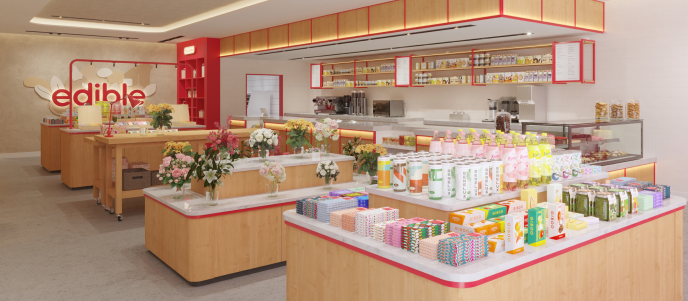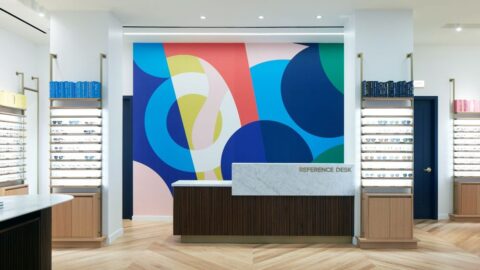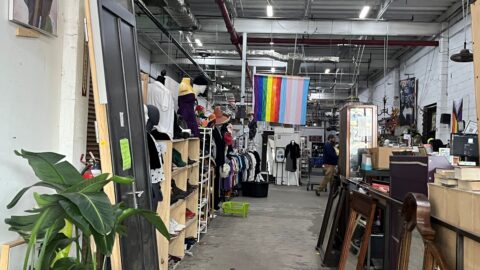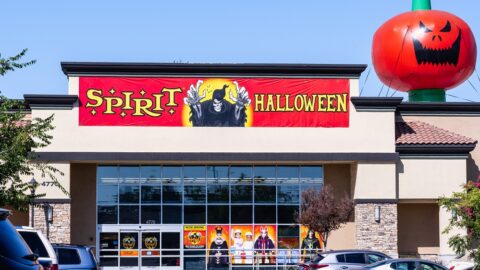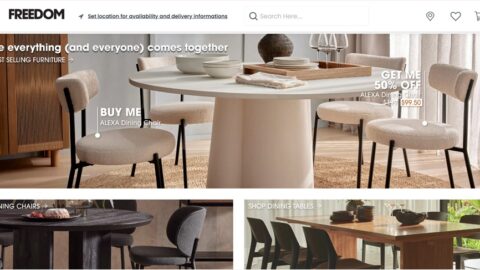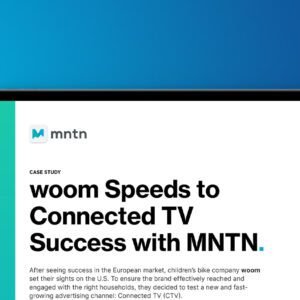Edible Brands operates both corporate-owned and franchised Edible Arrangements stores, but these brick-and-mortar locations have a few key differences from other kinds of specialty retail. In fact, they’re closer in form to takeout-heavy fast casual restaurants — which Edible Brands also operates, in the form of the Rōti chain of build-your-own-meal-style restaurants (think Chipotle with Mediterranean food).

“The right way to think about the [Edible Arrangements] model is as an ecommerce business that has [stores as] fulfillment centers,” said Edible Brands President and Chief Stores Officer Matthew Walls in an interview with Retail TouchPoints. “About 80% of the commerce goes through digital means and then it’s delivered, and typically not to the person who bought it, [since it’s generally a gift purchase]. What I have to think about is how I optimize the remaining 20% of that business.”
Such a business model requires a careful approach to site selection, both for Edible Arrangements and for Rōti. Edible Brands currently operates 17 Rōti restaurants, in Chicago, Washington, D.C. and Minnesota, and is looking to accelerate growth for both this banner and for Edible Arrangements.
Walls discussed Edible Brands’ approach to real estate as well as the many impacts that site selection and store design can have on day-to-day operations.
Retail TouchPoints (RTP): Given the delivery-heavy nature of the Edible Arrangements business, what are some of the most important things you’re looking for in terms of site selection?
Matthew Walls: Essentially what we’re looking for is a place that’s convenient for people to visit and is also a great location to deliver from. My professional career started in geospatial mapping at General Electric, so I’m partial to the analytics piece, and applying AI and psychographics to it. When we see a [potential] location, we throw it into the system to see whether we can be successful or not there. We do this for both corporate-owned stores and franchises.
We’re always trying to find nice real estate with good visibility as well as good access to delivery routes. We have to look at egress and traffic flow — for example, you don’t want a location that’s super busy from 5 p.m. to 8 p.m. [when many deliveries are scheduled]. We also like to have high transactional co-tenants around, because we do rely on some carryout business.
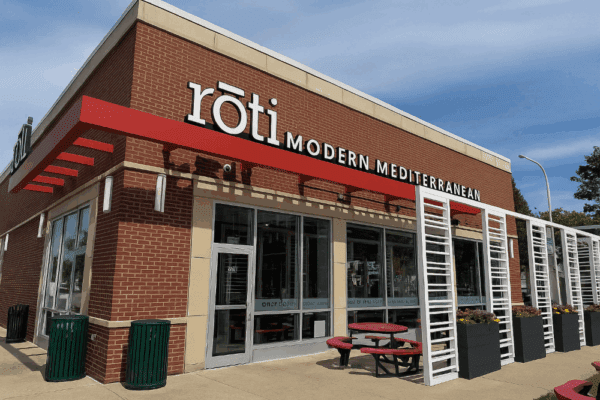
RTP: What are the real estate priorities for the Rōti locations?
Walls: Like most of our fast casual competitors in this build-your-own niche, a large lunchtime crowd will usually show up, so we look for power centers [real estate-speak for larger shopping centers] that are close to office buildings. The Rōti stores we purchased in February are predominantly in central business districts, such as downtown Chicago, to get that office traffic. But a growing trend that we’re seeing in more suburban centers is that while lunch [traffic is light], the afternoon and evening day parts give a nice bump. I’m confident that we can greatly expand out of the urban niche with Rōti.
RTP: What do you see as Edible Brands’ role during the construction/buildout phases of a new location?
Walls: For corporate-owned stores, we run everything — my real estate, construction and design teams are very hands-on, managing the contractors and the designers and then working with local municipalities. For franchisees, my job is really as a consultant; the franchisee finds great real estate and works with the general contractor. If I see things falling behind, I can ask the franchisee, “Do you need us to whisper into your general contractor’s ear?,” but I prefer to educate and inform the franchisees. We’re knowledgeable enough to go to the general contractor or really anyone in their ecosystem, and there are approvals we have to give, but primarily I’m operating as a consultant.
RTP: How about after the stores open? What are some common challenges?
Walls: We have to think about the customer journey for the 20% of the business [that’s not delivery]. That means it needs to be very easy to get in and out, as well as reducing any friction it would take for customers to pick up what they’ve already ordered or to buy something. We also want that [shopping area] to look like it’s actually being merchandised — that we’re not just putting all the stuff we carry up front. It’s hard to tell a story when the shelves are overly packed with products.
Our next-generation Edible Arrangements store, located in North Haven, Conn., has a redesigned storefront that’s meant to be more of a retailing space versus a “pickup counter.” It uses lighter woods and more focused lighting as well as updated graphics. We’ve realized that yes, we are a fulfillment center for ecommerce, but we do have all these other offerings, like smoothies, cheesecake and cookies.
Another element involves third-party delivery orders. At a Rōti, for example, I really don’t want delivery drivers to meander through the dining area or cut the [customer] queue. I inherited stores that weren’t designed [to circumvent that], but with any new Rōti building, the [delivery driver] access point will be close to the POS system, in order to monitor that the right people are picking up the right order. Design principles are always about flow and reducing friction.
RTP: How do you use design to reflect the community where these stores operate?
Walls: Any time you can bring some local essence into a design, it makes a ton of sense. It’s not just splashing the city’s name on the wall; you want to use elements from the area. For instance, with Rōti’s Lincoln Park location in Chicago, it’s all glass and very bright, with Mediterranean tile to lead customers through the queue. In other urban areas we’ve use more steel and polished concrete floors, with darker colors and high ceilings. That’s what’s fun about the Rōti side: as long as I have about 600 square feet for the operational center of the store, I can have fun with the rest of it.
RTP: What are other ways design affects how Edible Brands’ stores operate?
Walls: A lot of spaces are designed for guests/customers and not for team members. I learned early in my career that if your team members are forgotten — if your ambassador to the guest doesn’t have a proper area where they can blow off steam [if they’re having a problem] and then gather themselves, for example — they can’t be their best selves for the guest.




